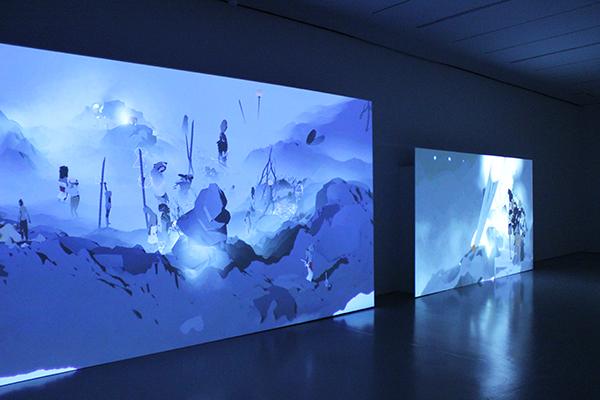Are you afraid that people are becoming robotic? Interested in seeing how technology can become art?
Never your grandmother’s museum, the Hirshhorn Museum put together the work of six international artists to form “Suspended Animation” – an experimental exhibit meant to explore the digital age and its translation (or replacement) of the physical form. The exhibit opened Feb. 10 and will run until March 12.
Nothing about this exhibit is typical, and walking through it was an amazing lesson in how technology has not only changed our perceptions of reality, but how it has become a reality in and of itself.
All of the artists in the exhibit used video as their medium, a welcome change from the sculptures or paintings found at a typical museum. While this was a thoughtful decision, some voiceovers were louder than others and interfered with the experience in certain rooms.
Themes of dehumanization, loss of emotion and the negative effects of technology were common.
The first piece I saw as I walked into the exhibit was Polish video artist Agnieszka Polska’s statue titled “I Am The Mouth,” which is a pair of lips half submerged in water on a video screen, almost oozing a “Rocky Horror Picture Show” vibe. The whispering of the lips is designed to spread tingles throughout the body, and combined with the dark and peaceful atmosphere of the exhibit, I was almost in a trance.
Each piece in the exhibit was also housed in its own room. The viewer was not allowed to see the next piece until they were finished with the current one – and were therefore forced to concentrate solely on one piece at a time.
The next piece, Helen Marten’s “Orchids, Or A Hemispherical Bottom,” didn’t disappoint. While Polska’s piece was dark and digital, Marten’s showcase was bright, with various colorful objects being shown on screen with a voiceover that didn’t correlate with what was being shown at all.
Some works, like Josh Kline’s piece “Hope and Change,” married suspicion and politics with technological advances. Kline used a facial substitution system, which placed President Barack Obama’s face over an actor who looked similar to him to trick audiences into believing it was actually the president.
Others corrupted the very base of emotion. Ed Atkins’s “Warm, Warm, Warm Spring Mouths” had a long-haired CGI avatar apathetically reciting the poem “The Morning Roundup” by Gilbert Sorrentino while rotating on screen. The reading was, by design, made all the more robotic when considering the passion of poetry as an art form.







